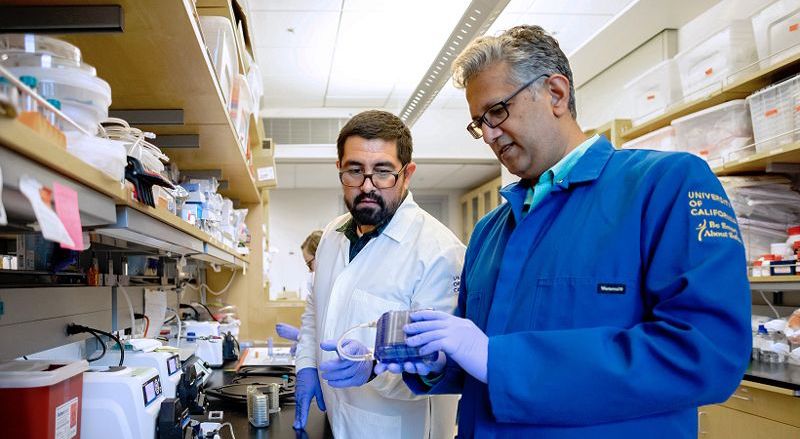Pediatric Kidney Transplant
Our Pediatric Kidney Transplant Program is one of the oldest and most experienced kidney transplant programs in the United States. Helping kids with end-stage kidney disease return to normal life through kidney transplants is our goal.
More than 500 transplants have been performed in children and teenagers since 1964. Over the past three years, more than 80 kidney transplants were performed in children and teenagers. As a leader in pediatric kidney transplantation, our one-year survival rate for both living-related and cadaver kidney transplant recipients is 94 percent, well above the national average.
Multidisciplinary Team
Our program is a team effort that includes kidney specialists (nephrologists), transplant surgeons, urologists, anesthesiologists, dialysis specialists, nurses, social workers, family counselors, child life specialists and specialists in pharmacy and nutrition, who all have training and experience in working with the unique needs of children. This comprehensive approach plays a large role in our program's success.
When the kidneys stop working, toxic waste products build up in the body, eventually resulting in end-stage kidney disease. A child who reaches end-stage kidney disease will need either dialysis — a mechanical process for filtering waste products out of blood — or a transplant. Neither of these options cures kidney failure. However, a successful transplant offers the closest thing to a normal state.
UCSF's Organ Transplant Program is a leader in performing kidney and liver transplants in children, attracting patients from throughout the West Coast.
Kidney Transplant Evaluation
During the evaluation for a kidney transplant, a transplant coordinator will arrange for a series of tests to assess your child's treatment options. The transplant staff will discuss any medical problems that need to be evaluated before the transplant, such as heart disease, infections, bladder dysfunction, ulcer disease or obesity. A social worker will meet with you to assess transportation, housing, financial and family support needs, and a financial counselor will meet with you to ensure you understand the covered benefits of your insurance policy.
We encourage you to ask questions and learn as much as possible about the transplant process before making a decision. You do not need to reach a decision by the end of the session.
Screening Tests
Regardless of the type of kidney your child may receive — from a living donor or a deceased donor — special blood tests are needed to determine your child's kind of blood and tissue. These test results help to match a donor kidney to your child.
Blood Type Testing
The first test establishes your child's ABO blood type. There are four blood types: A, B, AB and 0, and everyone fits into one of these groups. The recipient and donor must have either the same blood type or compatible ones. The list below shows compatible types.
- If your child's blood type is: A
The donor blood type must be: A or O - If your child's blood type is: B
The donor blood type must be: B or O - If your child's blood type is: AB (universal recipient)
The donor blood type must be: A, B, AB, or O - If your child's blood type is: O (universal donor)
The donor blood type must be: O
Patients with AB blood type, called the universal recipient, are the easiest to match because they accept all other blood types. Blood type O, called the universal donor, is the hardest to match. Although people with blood type O can donate to all types, they can receive kidneys only from blood type O donors. For example, if a patient with blood type O were given a kidney transplant from an A donor, the recipient's body would recognize the donor kidney as "foreign" and destroy it.
The Rh type (+, -) is not a factor in donor matching.
Human Leukocyte Antigens (HLA)
The second test, which is a blood test for human leukocyte antigens (HLA), is called tissue typing. These antigens are substances found on many cells of the body, but are mostly seen on white blood cells. Tissue type likeness between family members may be 100, 50 or 0 percent. The tissue type of all potential donors is considered in donor selection.
The prospective recipient and all family members and non-relatives interested in donating a kidney can make arrangements with the transplant team for tissue typing. No special preparation is required and results are available within two weeks. Pre-packaged kits with instructions about how to collect and return blood samples are available to mail to out-of-town relatives. The necessary blood can be drawn at a local physician's office or hospital laboratory and sent back to us via overnight mail.
Crossmatch
Throughout life, our bodies make substances called antibodies that destroy foreign materials. We may make antibodies each time we have an infection, have a blood transfusion or undergo a kidney transplant. If your child has antibodies to the donor kidney, the kidney will be destroyed. For this reason, we conduct a test to ensure that your child doesn't already have antibodies to the donor when a donor kidney is available. This test is called a crossmatch.
The crossmatch is done by mixing your child's blood with cells from your donor. If the crossmatch is positive, it means that your child has antibodies against the donor and should not receive this particular kidney. lf the crossmatch is negative, it means your child doesn't have antibodies to the donor and is eligible to receive this kidney.
Crossmatches are obtained several times during preparation for a living-related donor transplant, particularly if donor-specific blood transfusions are used. A final crossmatch is performed within 48 hours before the transplant.
Serology
Testing is done for potentially transmissible diseases, such as HIV (human immunodeficiency virus), hepatitis and CMV (cytomegalovirus).
Transplant Waiting List Placement
Once the evaluation is complete, the transplant team will meet and a decision is made whether or not to place your child on the transplant waiting list. This decision is made only after discussing each case with the nephrologist, surgeon, transplant coordinator, social worker and financial counselor. You will be notified when your child's name is placed on the United Network for Organ Sharing national transplant waiting list.
If a transplant isn't in your child's best interest, a transplant team member will call and discuss other options with you.
Living Donor Testing
Kidneys for transplantation come from either a living donor or a cadaver. When a living person donates a kidney, his or her remaining kidney will enlarge as it takes over the work of two kidneys. As with any major operation, there's a chance of complications, but kidney donors have the same life expectancy, general health, kidney function and activities as most other people. Any healthy person can donate a kidney. Sometimes a family member or close friend may wish to donate a kidney. A donor must be in excellent health, well informed about transplantation and able to give informed consent.
If you have a potential living donor, he or she will meet with a transplant surgeon and a transplant coordinator during the evaluation process to discuss the possibility of organ donation. We will perform tissue typing and other tests to determine if the potential donor is suitable. In some families, several people may be compatible donors. In other families, none of the relatives or non-relatives may be suitable.
For more information, please see our Becoming a Living Kidney Donor pamphlet
Kidney Transplant Procedure
Kidneys for transplantation may come from either living or deceased donors.
Living Donors
In the past, most living kidney donors had a surgical procedure, requiring a large incision to remove the kidney and usually a two-month recovery period. A new procedure, called laparoscopic donor nephrectomy, uses tiny incisions and miniature instruments to remove the kidney. Our team has performed more than 60 of these procedures since November 1999.
Only left kidneys are removed with this procedure, due to considerations of blood vessel length. Most laparoscopic nephrectomy patients stay at the hospital only two or three days after the surgery, compared to four or five days for a conventional nephrectomy. The laparascopic procedure is just as safe for both donor and recipient, and recovery is easier for the donor. Laparoscopic nephrectomy is now offered to any patient who meets the physical requirements.
Deceased Donors
A cadaveric kidney comes from a person who has suffered brain death. The Uniform Anatomical Gift Act allows all of us to consent to donate organs when we die and allows our families to provide such permission as well. After permission for donation is granted, the kidneys are removed and stored until a recipient has been selected. All donors are carefully screened to prevent any disease transmission.
If you want your child to undergo a cadaveric kidney transplant and this is a medically acceptable option, your child's name will be placed on a cadaver waiting list. A sample of blood for antibody level is sent monthly to the medical center. The waiting period for a cadaver kidney depends upon the availability of a cadaver donor compatible with your child's blood type and antibody level.
When a kidney becomes available, your child's referring kidney specialist is contacted for medical approval. The transplant service will verify that you have no recent infections or medical problems that would interfere with safe transplantation. The transplant service will tell you when a cadaver kidney is available and will assist in making arrangements for your transplantation.
Transplant Surgery
Your child's surgery may last from two to four hours. During the operation, the kidney is placed in the pelvis rather than the usual kidney location in the back. Your child's own kidney will remain undisturbed. The artery that carries blood to the kidney and the vein that removes blood from it are surgically connected to two blood vessels already existing in the pelvis. The ureter, or tube that carries urine from the kidney to the bladder, is also transplanted through an incision in the bladder.
After the operation, your child will be taken to the recovery room for a few hours and then will return to the Kidney Transplant Unit. The surgeon will inform you when the procedure is over.
Your child will be encouraged to get out of bed 12 to 24 hours following surgery to walk around the Kidney Transplant Unit as much as he or she can. Nurses will help teach your child how to take medications, about side effects and about nutrition guidelines after a transplant.
A cadaver kidney will occasionally perform as a "sleepy" kidney, a condition called acute tubular necrosis, or ATN. This means that the kidney is temporarily slow in functioning. Your child may need dialysis a few times, which will not harm the kidney. The "sleepy" kidney usually starts working in two to four weeks.
Reviewed by health care specialists at UCSF Benioff Children's Hospital.














